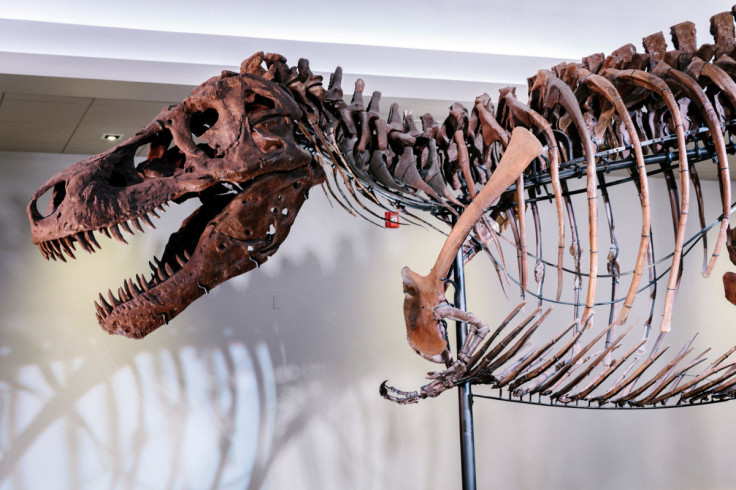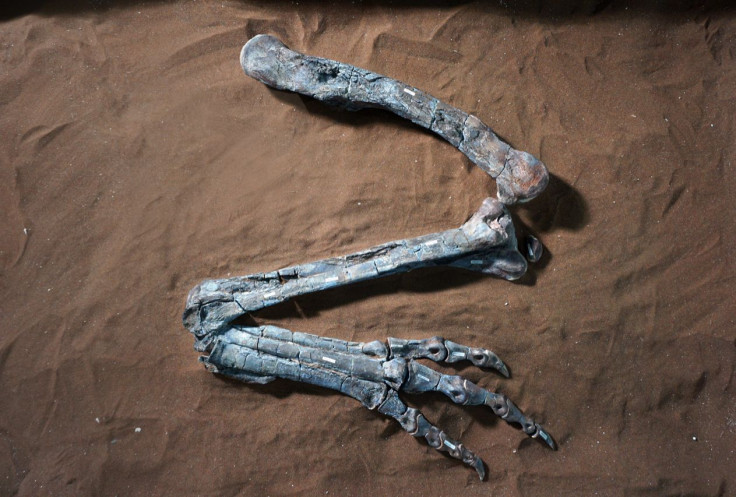100 Million-Year-Old Reptile Fossil Found In Australia: 'Rosetta Stone Of Marine Paleontology'

KEY POINTS
- Elasmosaur is a type of ocean-going plesiosaur that existed alongside dinosaurs
- The fossil was found by three amateur fossil hunters known as the "Rock Chicks"
- It would be the first known head and body of an Australian elasmosaur to be held in a museum collection
A 100-million-year-old fossil of a marine reptile has been excavated in Queensland, Australia, a rare discovery for the country.
The fossil includes the head and body of an elasmosaur, a type of ocean-going plesiosaur that existed alongside dinosaurs, 9 News reported.
The 6-meter-tall (19 feet) elasmosaur was reportedly found by three amateur fossil hunters known as the "Rock Chicks" – Cassandra Prince, her sister Cynthia and her friend Sally – on a cattle station in western Queensland in August.
According to Queensland Museum Network senior scientist and curator of paleontology Dr. Espen Knutsen, this discovery would be the first known head and body of an Australian elasmosaur to be held in a museum collection.
"We were extremely excited when we saw this fossil – it is like the Rosetta Stone of marine paleontology as it may hold the key to unraveling the diversity and evolution of long-necked plesiosaurs in Cretaceous Australia," Knutsen, who led the subsequent field trip to excavate the fossil, said, according to the outlet.
The expert added, "Because these plesiosaurs were two-thirds neck, often the head would be separated from the body after death, which makes it very hard to find a fossil preserving both together, so we are using CT scanning to give us an insight into these magnificent animals."
Elasmosaurs grew to between 8 meters and 10 meters long and lived in the Eromanga Sea, which covered large parts of inland Australia with waters 50 meters deep about 150 million years ago, CNN reported.
Knutsen told CNN that because the latest discovery was a young specimen, it would help show how the body shape of elasmosaurs changed from youth to adulthood.
This newly discovered fossil could become a big contributor to unlocking the mystery that surrounds Australian plesiosaurs.
During the early Cretaceous period, between 145.5 million and 65.5 million years ago, the whole of Queensland was almost covered in a vast, shallow sea (the Eromanga Sea) and fossil remains of the ocean's inhabitants, including marine reptiles.
There were also several plesiosaurs and ichthyosaurs found and collected on the field trip. All the fossils will be transported to Townsville, Australia, for preparation and further research and study.
Every year, the Rock Chicks meet to search for fossils on the property. They were thrilled with all their discoveries through the years – a plesiosaur each, a kronosaurus, an ichthyosaur, fish and turtles.
Cassandra said they are looking forward to their 2023 fossil hunt, with the motto of "let's keep the paleos busy," according to 9 News.
"There are so many people who have helped get these amazing fossils to Queensland Museum including our friends, Tom and Sharon who helped us start digging two of the plesiosaurs," Cassandra said.
She continued, "And we wouldn't have been able to do this without the help of our little minions Bill, Mark, Remi, Pip, Gwen and Gordon."

© Copyright IBTimes 2025. All rights reserved.





















